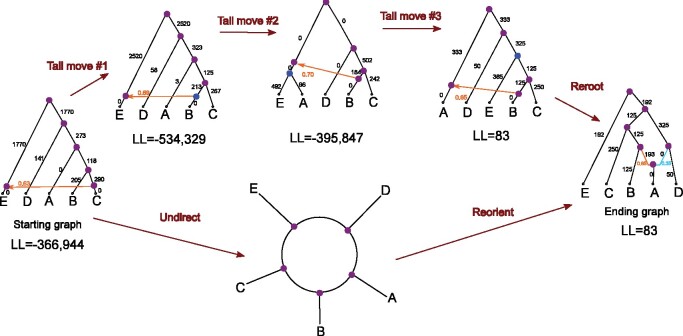Fig. 2.
The top of the figure shows a minimal sequence of three tail moves that transforms the starting network N1 computed in step 2 into the ending network . We found, through brute force analyses, that any sequence of tail moves from N1 to must traverse through a network with a lower likelihood score than N1. Alternatively, N1 can be transformed into by selecting A as the admixed population (instead of E) and redirecting the edges of the network accordingly. Adopting the language of Huber et al. (2019), we refer to this as reorientating the network. This is not to be confused with rerooting the network, which simply relocates the position of the root and does not change which populations are admixed. Numerical parameters and log-likelihood scores shown above were computed using TreeMix. Branch lengths shown are multiplied by 1000

